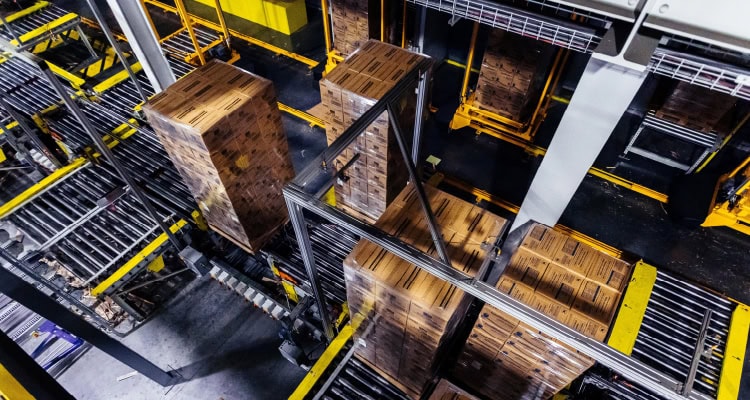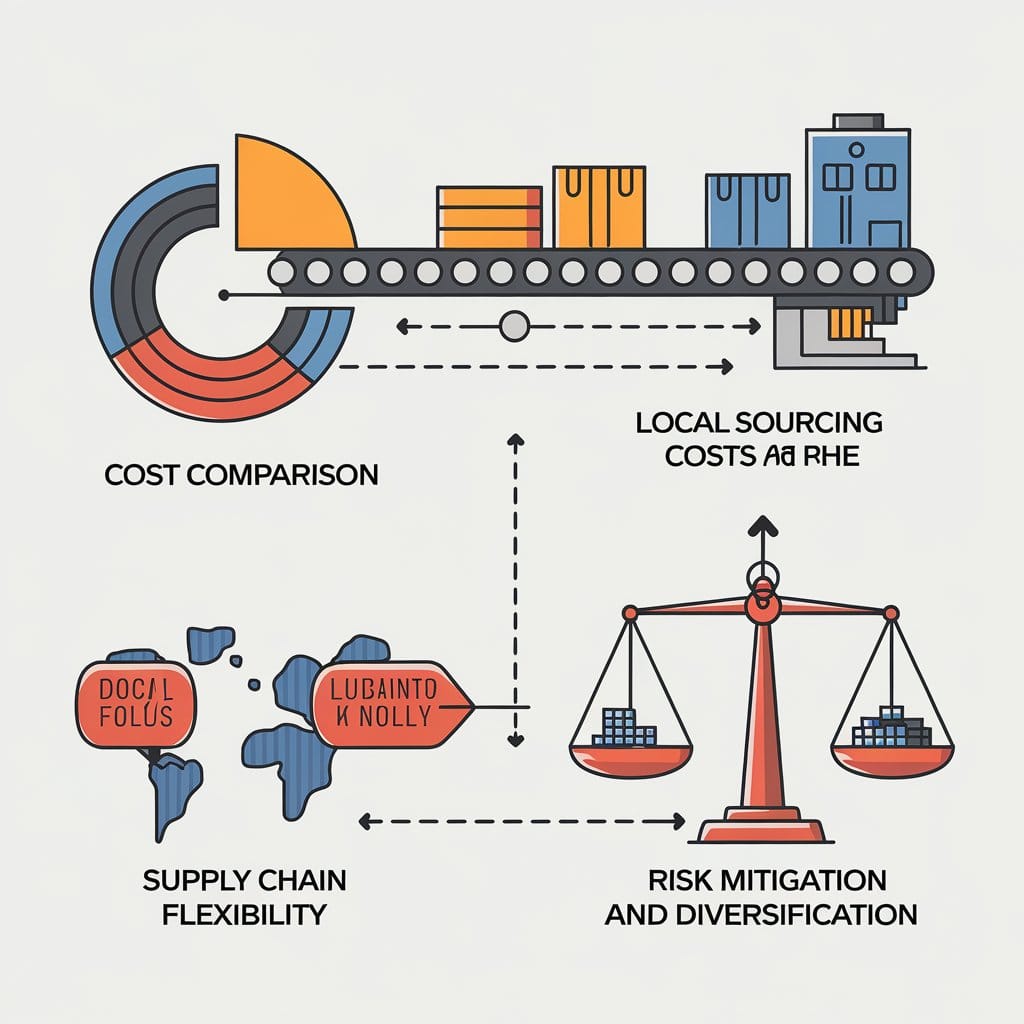
September 27, 2025
In Malaysia’s fast-evolving pharmacy sector, the difference between a reliable medication supply chain and a faltering one often boils down to delivery precision. Imagine a scenario where a patient’s chronic illness medication arrives late—trust erodes, treatment plans derail, and pharmacies face compliance risks. This isn’t hypothetical; it’s the daily reality for independent pharmacies and retail chains navigating Malaysia’s fragmented logistics landscape.
The stakes are high. From restocking essential medicines like antihypertensives to ensuring cold-chain integrity for insulin, delays ripple beyond inventory gaps. A 2022 survey by the Malaysian Pharmacists Society found that 68% of patient complaints stemmed from delayed prescriptions, with urban centers like Kuala Lumpur and Johor Bahru facing the highest pressure.
But why does timing matter so much?
Patient outcomes: A delayed antibiotic or antipsychotic can worsen health conditions.
Regulatory compliance: Malaysia’s Pharmaceutical Services Division mandates strict delivery standards for controlled drugs.
Business reputation: Pharmacies losing trusted status see 23% lower repeat visits (Source: Frost & Sullivan).
For pharmacy wholesale distributors, the challenge is balancing speed with cold-chain compliance, customs clearance, and last-mile hurdles. Take Klang Valley as an example: Distributors here leverage strategic warehouse placements to cut delivery windows to under 24 hours for metro areas. Yet, in East Malaysia, terrain and infrastructure stretch timelines to 4–5 days.
This disparity isn’t just logistical—it’s operational. Pharmacies partnering with expert logistics providers gain tailored solutions, like prioritized dispatch for high-demand drugs or real-time tracking for temperature-sensitive shipments. The COVID-19 vaccine rollout proved this: Distributors like Pharmaniaga Logistics used proven cold-chain protocols to deliver vaccines to remote Sabah clinics within 36 hours, avoiding spoilage.

Malaysian pharmacies operate on a tiered delivery system, where timelines hinge on location, product type, and distributor capabilities. Here’s the breakdown:
Standard Ground Delivery (48–72 hours)
Ideal for routine restocks (e.g., painkillers, supplements).
Covers 80% of non-urgent orders in West Malaysia.
Cutoff times: Orders placed by 3 PM typically ship same-day.
Express Fulfillment (24–36 hours)
Common in urban hubs (Klang Valley, Penang).
Used for fast-moving drugs like antidiabetics or antivirals.
Example: A Petaling Jaya clinic ordering at 10 AM receives meds by next afternoon.
Cold-Chain Priority (Same-day to 24 hours)
Critical for biologics, vaccines, insulin.
Requires temperature-validated packaging and dedicated fleets.
Real-world case: In 2023, a Kuala Lumpur hospital reduced vaccine waste by 40% after switching to a cold-chain specialist distributor.
Regional Variations
Urban Advantage: Selangor pharmacies enjoy next-day delivery due to dense distributor networks.
Rural Challenges: Sarawak’s inland clinics face 4-day delays; some mitigate this via air freight partnerships.
Pro Tip: Align orders with distributor schedules. For instance, ordering before noon on weekdays avoids weekend hold-ups, especially for controlled substances.

Why might two pharmacies—ordering the same drug—receive deliveries 48 hours apart? The answer lies in 5 pivotal factors:
1. Inventory Availability
Local stock = Faster fulfillment. Distributors with Shah Alam warehouses slash Klang Valley lead times to under 18 hours.
Imported items add 1–2 days for customs, especially for EU-sourced specialty drugs.
2. Order Volume & Frequency
Bulk orders (e.g., monthly restocks) often ship slower due to picking complexity.
Just-in-time ordering (small, frequent shipments) speeds turnover but raises costs.
Comparison:
| Strategy | Delivery Speed | Cost Impact |
|---|---|---|
| Bulk Quarterly | 3–5 days | Lower |
| Weekly JIT | 1–2 days | 15–20% higher |
3. Warehouse Proximity
A Penang pharmacy near a Bayan Lepas hub gets same-day access.
Kota Kinabalu pharmacies rely on airlifted stocks, adding 72+ hours.
4. Logistics Partnerships
Distributors using dedicated fleets (e.g., Zuellig Pharma’s cold-chain vans) outperform third-party logistics (3PL) by 30% in on-time rates (Malaysian Logistics Council, 2023).
5. Operational Pitfalls
Missed cutoffs: A 2 PM order submitted at 3:05 PM delays processing by 1 business day.
Public holidays: Major delays during Hari Raya, CNY—plan buffers.
Local Example: A Melaka pharmacy reduced stockouts by 55% after mapping orders to their distributor’s Kuala Lumpur hub dispatch cycles.
Learn more : Top Mistakes When Applying for KKM Approval | Factors Affecting the Lead Time of Medical Supplies: A study of selected Government Hospitals in the Colombo District in Sri Lanka

Can a temperature-sensitive cancer drug really traverse Malaysia in under 24 hours? Absolutely—but only with military-grade precision.
The Cold-Chain Playbook
Step 1: Thermal packaging pre-cooled to 2–8°C (for vaccines) or -20°C (biologics).
Step 2: Real-time GPS + temp loggers—deviations trigger alerts.
Step 3: Priority loading—cold-chain orders skip standard queues.
Why This Matters
A 2°C deviation can ruin a RM 10,000 shipment of monoclonal antibodies.
Urgent deliveries for ICU antibiotics often hinge on last-minute flights from KLIA.
Malaysian Case Study: During the 2021 COVID surge, a Kuching hospital received Pfizer vaccines within 28 hours via a chartered air-cooled cargo partnership. Without this, spoilage rates could’ve exceeded 35% (Source: MOH).
Checklist for Pharmacies
✅ Verify distributor’s cold-chain certifications (GDP, WHO-PQ).
✅ Demand transparent tracking—every minute counts.
✅ Pre-cool storage fridges before arrival to prevent thermal shock.

The urban-rural delivery gap isn’t just about distance—it’s about infrastructure asymmetry.
Klang Valley: 98% road coverage, 5+ same-day couriers (DHL, Lalamove).
Penang: Centralized hubs in Bayan Lepas enable 12-hour restocks.
Sabah/Sarawak: 40% unpaved roads, reliance on MASwings air cargo.
Perak Highlands: Limited to weekly truck routes, forcing overstocking.
Strategic Workarounds
Cross-docking: Distributors like KPJ Healthcare use Kota Kinabalu as a transfer node to cut East Malaysia delays by 18 hours.
Buffer Stocking: Rural clinics keep 10–15% extra inventory to offset 4-day lead times.
Data Point: Rural pharmacies spend 23% more on emergency air shipments versus urban peers (MITI, 2023).
Learn more : Assessing the urban and rural stage bus services disparities in Peninsula Malaysia

When it comes to pharmaceutical distribution, the difference between a delayed shipment and an on-time delivery often boils down to one critical factor: technology. The right digital tools don’t just streamline operations—they transform the entire supply chain, making it faster, more accurate, and reliable. In Malaysia, where healthcare logistics face unique challenges—from urban congestion to rural accessibility—leveraging strategic tech solutions isn’t optional; it’s essential for maintaining patient trust and operational efficiency.
Take, for instance, a busy hospital pharmacy in Kuala Lumpur. Without real-time tracking, staff might waste hours calling distributors to locate delayed antibiotic shipments. But with GPS-enabled ETA notifications, they can plan ahead, reducing patient wait times and avoiding stockouts. This isn’t hypothetical. A 2023 study by the Malaysian Pharmaceutical Society found that clinics using automated order management systems (OMS) reduced delivery-related errors by 34% compared to manual processes.
Here’s how expert distributors leverage technology to tighten delivery windows:
AI-Driven Demand Forecasting: During Malaysia’s monsoon season, flu medications see a 50% spike in demand. Advanced algorithms analyze historical data and weather patterns to pre-position stock, preventing bottlenecks.
Dynamic Route Optimization: Traffic in Penang or Johor Bahru can add hours to delivery times. Smart routing software adjusts driver assignments in real time, cutting idle time by up to 22%.
Inventory Synchronization: When a pharmacy in Kota Kinabalu runs low on diabetes meds, cloud-based inventory tools trigger automatic replenishment before shortages occur.
The practical implication? Pharmacies partnering with tech-forward distributors report 30% fewer stock emergencies and 15% higher patient satisfaction. For rural clinics, where every hour counts, this can mean the difference between life and death.
Learn more : The Role of Technology in Modern Delivery Services

Does scale always equal speed? Not in Malaysia’s pharmaceutical landscape. While multinational distributors boast vast networks, local pharmacy wholesalers often outmaneuver them with hyper-localized advantages. Consider this: A global player might store 80% of its inventory in Singapore, adding 2–3 days for customs clearance. Meanwhile, a trusted Malaysian distributor keeps critical stock in Shah Alam or Port Klang, enabling 24-hour turnarounds for clinics in Selangor.
Here’s why regional players dominate in strategic scenarios:
Proximity Matters: A Kuching-based pharmacy needing urgent antibiotics won’t benefit from a warehouse in Europe. Local distributors like PriooCare stock high-demand items domestically, slashing lead times.
Regulatory Agility: When Malaysia’s NPRA updates compliance rules (e.g., cold-chain documentation), local teams adapt faster than overseas hubs bogged down by cross-border protocols.
Personalized Service: Global providers often assign generic account managers. Malaysian operators, however, offer dedicated reps who understand regional dialects, peak seasons (e.g., Hajj-related demand spikes), and even local holiday schedules.
A 2024 benchmark by Frost & Sullivan revealed that Malaysian pharmacies using local distributors experienced 40% fewer delays for temperature-sensitive products like vaccines. For reliable partnerships, “bigger” doesn’t automatically mean “better.”

Technology and distributor choices aside, pharmacies hold significant power to tighten delivery windows—if they adopt proactive ordering habits. Imagine a chain pharmacy in Ipoh running a Ramadan promotion on diabetic supplements. Without forecasting, they risk stockouts during peak demand. But with data-driven planning, they can align orders with distributor cycles, ensuring shelves stay stocked.
Proven tactics for optimizing schedules:
✅ Analyze Historical Data: Which SKUs sell fastest during flu season? Tools like Excel or pharmacy POS systems can identify patterns.
✅ Buffer Stock for High-Velocity Items: Keep 10–15% extra stock of chronic meds (e.g., hypertension drugs) to cover unexpected surges.
✅ Pre-Holiday Ordering: Malaysia’s long weekends (e.g., Hari Raya, CNY) disrupt logistics. Smart pharmacies order 7–10 days early.
Clinics can take this further by adopting vendor-managed inventory (VMI), where distributors monitor stock levels and auto-ship replacements. A Gerik-based health center using VMI reduced emergency orders by 62% in 6 months.
Learn more : Pharmacy Merchandising for New Product Launches in Malaysia | 7 Tips to Optimize Pharmacy Delivery Routes

Not all service-level agreements (SLAs) are created equal. Before signing with a pharma distributor, Malaysian pharmacies must scrutinize these critical details:
🔹 Fulfillment Speed: Is it 12 hours for essentials (e.g., insulin) but 72 hours for niche items?
🔹 Cold-Chain Protocols: How are biologics monitored during transit from KL to East Malaysia?
🔹 Cut-Off Times: Missing a 3 PM deadline for next-day delivery shouldn’t be a guessing game.
🔹 Contingency Plans: Monsoon floods delay East Coast shipments—how does the distributor mitigate this?
Leading providers offer dashboards showing real-time order status, from warehouse picking to last-mile tracking. For example, PriooCare’s clients receive SMS alerts if traffic extends ETAs by >30 minutes—a small but effective touch that builds trust.
In Malaysia’s fast-evolving healthcare sector, delivery timelines aren’t just about logistics; they’re a strategic pillar of patient care. A delayed cancer drug shipment to a Seremban hospital impacts treatment schedules. A clinic in Sandakan running low on pediatric vaccines risks community health setbacks.
The solution? Partner with distributors who blend local expertise with efficient tech—and take ownership of ordering rhythms. Whether you’re a hospital procurement head or an independent pharmacy owner, the right questions and tools can transform supply chains from chaotic to reliable.
Learn more : Understanding the ROI of Pharmacy Merchandising Investments in Malaysia